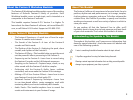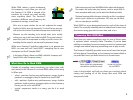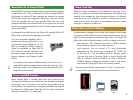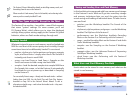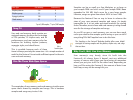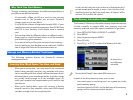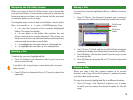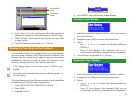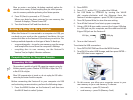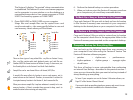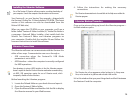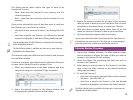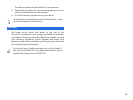
6
The Fantom-X Owner’s Manual has details on installing memory cards, and
formatting them for use on the Fantom-X.
When we refer to “card memory” later in this booklet, we’re referring to the
memory on the currently installed PC card.
Um, “Two Types of Flash.” Except for the Third.
The Fantom-X has another—less visible—area of flash memory
that stores “system” settings. On some screens, you’ll see
F8 (System Write), which allows you to store the displayed
settings. Many system settings apply to the Fantom-X’s global
behavior; others are Patch mode settings. Enough said.
Getting Loaded
Whatever’s stored in user or card memory must be loaded into
RAM for use. Most of this occurs pretty much invisibly, though
some items have to be deliberately loaded. To use stored:
• patches, rhythm sets, rhythm patterns and groups, arpeggio
styles, and chord forms—simply select them. The Fantom-X
instantly puts them in work RAM.
• songs—use Load Song or Load Song + Samples on the
Save/Load screen to load a song into work RAM.
• samples—load the desired samples into sample RAM from
the Sample List screen, or let the Fantom-X automatically
load them for you at power-up, as described in Sampling
on the Fantom-X.
You can actually listen to songs—though not their audio tracks—without
loading them into RAM. Use the Quick Play and Chain Play features
described on Page 164 in the Fantom-X Owner’s Manual. To edit or
otherwise work with songs—and to hear their audio tracks—they must
be loaded into RAM.
Saving and Loading User and Card Memory
In this booklet we’re concerned with how memory and storage
in the Fantom-X work. While we’ll get into some key storage
and memory techniques later, we won’t be going into the
actual saving and loading of individual items. To learn how to
save and load:
• patches—see the Workshop booklet The Sounds of the
Fantom-X.
• rhythm sets, rhythm patterns, and groups—see the Workshop
booklet The Rhythms of the Fantom-X.
• performances—see the Workshop booklets Recording
Music on the Fantom-X or Performing with the Fantom-X.
• songs—see the Recording Music on the Fantom-X and Audio
Tracks Workshop booklets.
• samples—see the Sampling on the Fantom-X Workshop
booklet.
• arpeggio styles—see the Advanced Fantom-X Sequencing
Techniques Workshop booklet.
• chord forms—see the Performing with the Fantom-X
Workshop booklet.
What User and Card Memory Can Hold
Here’s what can be stored in user memory and what can be
stored in card memory.
Data Type User memory Card memory
Patches 256 256
Rhythm sets 32 32
Performances 64 64
Shared space:
samples and songs
up to 32 MB* up to capacity**




